- Home
- M G Vassanji
And Home Was Kariakoo
And Home Was Kariakoo Read online
Also by M. G. Vassanji
FICTION
The Magic of Saida
The Assassin’s Song
The In-Between World of Vikram Lall
When She Was Queen
Amriika
The Book of Secrets
Uhuru Street
No New Land
The Gunny Sack
NON-FICTION
A Place Within: Rediscovering India
Mordecai Richler
Copyright © 2014 M. G. Vassanji
All rights reserved. The use of any part of this publication, reproduced, transmitted in any form or by any means electronic, mechanical, photocopying, recording or otherwise, or stored in a retrieval system without the prior written consent of the publisher—or in the case of photocopying or other reprographic copying, license from the Canadian Copyright Licensing Agency—is an infringement of the copyright law.
Doubleday Canada and colophon are registered trademarks of Random House of Canada Limited
Library and Archives Canada Cataloguing in Publication
Vassanji, M. G., author
And home was Kariakoo : a memoir of East Africa / M. G. Vassanji.
ISBN 978-0-385-67143-9
eBook ISBN 978-0-385-67144-6
1. Vassanji, M. G.—Travel—Africa, East. 2. Vassanji, M. G.—Childhood and youth. 3. Authors, Canadian (English)—20th century—Biography. 4. Africa, East—Biography. 5. Africa, East—Description and travel. I. Title.
PS8593.A87Z462 2014 C813′.54 C2014-903139-4
C2014-903140-8
Cover image courtesy of the author
Published in Canada by Doubleday Canada, a division of Random House of Canada Limited, a Penguin Random House Company
www.randomhouse.ca
v3.1
For JKS Makokha
The Author’s Travels
Partir. Mon coeur bruissait de générosités emphatiques. Partir … j’arriverais lisse et jeune dans ce pays mien et je dirais à ce pays dont le limon entre dans la composition de ma chair …
Je viendrais à ce pays mien et je lui dirais: “Embrassez-moi sans crainte … Et si je ne sais que parler, c’est pour vous que je parlerai.”
To flee. My heart was full of generous hopes. To flee … I should arrive lithe and young in this country of mine and I should say to this land whose mud is flesh of my flesh …
I should come back to this land of mine and say to it: “Embrace me without fear … If all I can do is speak, at least I shall speak for you.”
—Aimé Césaire, Cahier d’un retour au pays natal
Contents
Cover
Other Books by This Author
Title Page
Copyright
Dedication
The Author’s Travels
Epigraph
Preface
1. Going Home
2. Gaam, Dar es Salaam: The India Town
3. Gaam Strikes Back: The Leaning Tower and Other Recent Developments
4. The Road to Tanga
5. Tanga, Decline in the Sun
6. India and Africa: Of Entrepreneurs Old and New
7. Kilwa, the Old City
8. Quiloa, the Island
9. The Mystics Down the Road: Discovering the Sufis
10. Burton and Speke, and the East African Expedition of 1857
11. The Old Westbound Caravan Route
12. Bongoland: Something Is Happening
13. Kigoma and Ujiji: The Long Road
14. The South Coast: A Journey Shortened
15. The Southern Highlands: Tukuyu—Neue Langenberg
16. The Southern Highlands: Mbeya
17. Book, Medicine, and Spirit
18. Zanzibar: Island in the Sun
19. Zanzibar: The Revolution
20. Zanzibar: The Sweet and the Smelly
21. The Old Warriors: Dar es Salaam Again
22. Omba-omba: The Culture of Begging
23. The New (Asian) African: Politics and Creativity
24. Nairobi, Lost and Regained?
25. Closing the Circle
Select Glossary
Bibliography
Photo Captions
Sources and Credits
Acknowledgements
Preface
FROM ABROAD, I OFTEN SEE AFRICA perceived merely as a place of war, disease, and hunger, a sick entity deserving pity and sustenance and all help possible. Schoolchildren gather to donate quarters to it. Men and women make professions pointing out its woes. Celebrities collect funds for it. People keep asking: Is there hope for Africa? Africa, it seems, is the world’s perpetually poor relation.
Over the years I have often revisited East Africa, where I was born and raised, as were my parents and one grandfather. From the inside, the place is actually very different, and the world looking out also seems very different. It is as though a distorting lens separated these two realities. East Africa is an exciting place; to me it always was. During my revisits I saw problems, of course—some of them new, others merely larger—but there was much more. I walked through vast food and clothing markets, saw abundance as well as poverty; there was begging and sullen unemployment, but also there were games and festivals, there was joy. There was music and colour. Boys and girls in uniforms traipsing off to school early in the morning on city streets and country roads, people gathered for a wedding, men crowded under a tree after a funeral. Intellectuals ruing the lost days of idealism. I have witnessed poetry being made and discovered, in the language of the country; the youth in debate about their future, reminding me of the hopeful, exciting days of my own youth; early schoolers shyly come to a stage to announce their ambitions. Late one evening a man gave me a ride back from a literary reading at a bar and told me he had ambitions of building a supercomputer, and his own personal library. Every place is a universe in itself; I saw a vast diversity in a varied and teeming country. There was life, there were people. There was the geography.
Growing up in a country you absorb a sense of its multiple dimensions, carry images of its distant places, and hear the poetry of their name-sounds—and come away with a certainty or expectation that you’ll see much of it during your lifetime. It’s yours, after all. Circumstances took me away, and for a long time it seemed to me that I would never visit those lost dimensions, experience the land in its variety, appreciate the diversity of its people. I was wrong, all it required was a will to go and do just that.
One day I decided I would visit and experience that land as much as possible; travel to its different corners and write—not about the country per se but about myself in it; not as an outsider reporting to outsiders but as someone from there, who understood. If in the process I could provide a context, or indulge in history, which is a passion, or in memory, which is a form of history, all the better. There were moments when the thrill of travel and discovery was such that I wished I could go on and on, from place to place, and never stop. But I was not young anymore, and one lives with constraints; twice I had to be told Enough, and reluctantly, facing an inviting, unvisited landscape, I turned back. I had to stop.
—MGV
1.
Going Home
DOWN BELOW, OUT THE AIRPLANE PORTHOLE, lay the vast unconquered landscape of Africa—so different from the parcelled geometry of Europe which I had crossed over or the grey, highway-girded northeastern United States where I had made my home for the time being. The red earth and green scrubland, a few huts, a solitary figure wending its way on a trail to somewhere, perhaps carrying water, all under a cool morning sun that would in no time replenish its fires and begin to bake the earth. It must have been the arid north of Kenya, south of Somalia, down there below me, but it didn’t matter, the familiar
ity was unquestionable and it filled me with a huge emotion. This was my country. This was East Africa and I was returning home.
I was twenty-one, it was only sixteen months since I had gone away, but that was a long time then. Mine was the overwhelming emotion of someone who had feared he might not see home again. The people, the places; the music, the language: everything that was suffused into my pores and my very being, now crowded out by new challenges and pushed back into memory. That feeling about my African home would never change over the years and decades that followed, during which I would go to many places, including Canada, which gave me a home, and my Indian ancestral homeland, which partially claimed me back.
Many from my generation left during those heady 1960s and ’70s of the last century, soon after independence. Most went away to the United Kingdom, Canada, and the United States, and some have returned for visits, but few that I know with that intensity of emotional reclamation. Of mad belonging. Some of those who left never returned, having made good their escape, packing their bitterness with them—bitterness at the politics, the revenge racism, and the socialist policies and broken official promises that drove them out; others left simply to fulfill the colonial dream, finding their way to what had been the centre of their universe—London, now simply the West. Whence this sense of place in me, I have often wondered. To call it nostalgia is too easy; I recall harrowing moments from a deprived childhood, as well as happy ones. I don’t long for the crowded bedroom of my childhood, the despair of a single mother on the brink of breakdown; they are gone. Dar es Salaam, where I grew up, has changed; Nairobi, my birthplace, has changed. I have seen both these cities which were my home metamorphose during numerous revisits—populations multiplied, violence increased, beauty and serenity reduced to squalor. Toronto, where I live and have made my home, has changed too; it has become friendly and cosmopolitan, its urban spaces look renewed, as they do in the American cities I have known: Boston, Philadelphia, New York. But, to use a metaphor, returning to the original home either one can opt to observe how everyone has aged and everything is no longer the same, and how ultimately, predictably disappointing it all is; or one sees the familiar and the dear in the older, broken faces. One has memory, and attachment and commitment, one is aware of change and history as it applies to everything.
Modern aesthetic—I mean the western one—prefers ironic detachment, a stony turning away from the emotion, a haughty look askance at anything that might give joy or sadness—seeing the inevitable winter behind the summer, the motive behind the charm, the spent passion, the bitter aftertaste. Does climate have anything to do with this? Those of us from the south—where fruits and vegetables actually rot and smell, and death is real, not irony—sometimes fear what the winters might be doing to us. I see my feelings about my place of birth to be mixed, obviously, growing older demands that, but disappointment does not poison the joy or the attachment.
Perhaps I judge unfairly this “western” aesthetic. It is novelists, of whatever country and culture, who in some sense never leave home, who keep returning to it—despite that old cliché. Why this need to return? My answer is this: there is simply too much of life unexplored that, at a distance and prompted by nostalgia, yes, and the clarity of observed youth, yields precious narrative and self-knowledge.
The question arises: Is the return of the Asian African different from that of an African African? The answer is yes, if only because for the former the ancestral South Asian homeland is a reality that looms closer today than it did on the streets of Dar es Salaam and Nairobi; the links to it are more realized. The returning African African at the same time comes with a global black consciousness. There is that unavoidable pulling away, then. And yet I’ve kept returning to this African homeland, and at each arrival there is that unmistakable tug at the insides, the same instinct to draw in deep from the air. The smoky coolness outside Nairobi airport at night, the salty humidity of Dar at the same time. The exclamations, the echoes of spoken Swahili.
2.
Gaam, Dar es Salaam: The India Town
FOR DECADES NOW BY DAR ES SALAAM’S LOVELY, open seashore its Asians have arrived in numbers to stare out at the ocean, carrying out a mysterious communion with the water that separates them from their ancestral homeland to the north and east. So it appears. In my childhood we came on foot, and during our frolicks we would go tumbling down from street level to water’s edge. Two tugboats plied the harbour; a liner might depart at that hour, the passengers would wave, we waved back. Nowadays the Asians arrive in their cars or their oversize 4 × 4s, which they park in a long straight formation across the road from the water, and seated in their transport or standing beside it, they stare out at the blue beyond. Vendors, as they have always done, ply varieties of street food. Then as dusk falls, all depart.
The harbour is natural, a bay with a narrow inlet that is swimmable by the brave. The story goes that in 1862 Sultan Majid, the rather dashing Omani ruler of Zanzibar, whose domain included the long East African coastline, happened to arrive at this haven across the channel, and was so impressed by it that he called it Bandar es Salaam, the harbour of peace—hence the name Dar es Salaam. He resolved to build a town here, with a palace—a private pad, a home away from the political clamour, family intrigues, and foreign machinations at work on his island metropolis. But he died in 1870, the dream unfulfilled. It was the Germans who completed it when they colonized the mainland a decade and a half later, making Dar es Salaam their capital and bypassing the nearby great market town of Bagamoyo, which had processed thousands of slaves over the years and perhaps deserved the snub.
The population of Dar es Salaam when I was a teenager reached 100,000. Consequently, at about the independence of Tanganyika in 1961, the town was declared a city—by what authority we were not quite sure but we were now in the big league. The world looked bright. Eminent visitors from all over the world dropped by in the sunshine of our new country, looking thrilled, announcing hope and promise. We had emerged from the backwater of an empire into a community of nations. A tower was erected to commemorate the “city status,” at the centre of a traffic roundabout a block away from the harbour. It was a modest rectangular structure, painted a plain yellow and some twenty-five feet tall, with a clockface at the top; it proclaimed no ambition or lofty thought. The only other monument in the city was the bronze Askari statue, a mile away on the acacialined Independence Avenue, which honoured the African soldiers who gave up their lives during the First World War. How a European war was fought by Africans and determined the fate of this nation and city is one of the ironies of colonial rule.
The city-status tower stands intact now, surrounded by the same one- and two-storey buildings of yore and overlooking a decrepit parkette. Heavy traffic runs both ways past it, rendering the monument small and insignificant, almost invisible. Which is as well, for the population of Dar is now some four million.
A necklace of gleaming white buildings with a tall, grey-spired cathedral at one end graced the shoreline of the colonial harbour capital and met the traveller who arrived by sea. Unfortunately the white necklace is broken now, defaced by questionable or even haphazard modern construction. To the proposal, or protest, that historical buildings—German, Arab, Indian—should be preserved often comes the retort, Whose history? The answer requires some thought.
My forefathers left the small towns of western Gujarat—Jamnagar, Junagadh, Porbandar—with populations of 15,000 to 20,000 at the turn of the twentieth century, to settle on the East African coast. The old town of Dar es Salaam, the commercial section behind the elegant white shoreline, was their construction. It was the area of the first Indian settlement of Dar, and we called it Gaam, “Town”; in Swahili it was known as mjini, meaning the same thing; nowadays it is also referred to as Uhindini, the Indian (or Asian) area. A single long street, called Kichwele (later renamed Uhuru) Street, went down from Gaam past Mnazi Mmoja (then Arnautoglu) ground into the African area called Kariakoo; it was lined all th
e way with Indian stores and homes.
It was here, between Gaam and Kariakoo, that my mother opened her “fancy goods” store, when we moved fatherless from Nairobi to Dar. Running a small shop in a competitive market was hard work, and we all pitched in. It was here that the tailor Edward told me stories, where my cousin Shamim told me different stories, where my mother told me about her childhood. My strongest memory of her sees her seated on her high stool behind her shop counter, brooding, picking her chin. Awaiting customers. At night we would fight for the chance to press her aching feet.
Some time in the 1920s and ’30s the Indians had replaced their old, slummy settlements with single-storey brick buildings; in the ’50s and ’60s came the double-storey and the rare three- and four-storey buildings, and the singular five-storey tallest building in town with its distinctive pyramidal front, overlooking Mnazi Mmoja ground. The owner of this pyramid was a man called Habib Punja, whom we kids knew as a somewhat short, round man who oscillated side to side as he walked—which he did rarely, since he was possibly the richest man in town and went about in a chauffeured Mercedes-Benz. But it was believed that he had made his wealth by starting out as a peanut vendor on the sidewalks, and he died of a heart attack when his many properties were nationalized during the heyday of socialism in 1971.
Dar es Salaam for all its smallness had six cinemas, a football stadium, and several cricket grounds. There were many schools, including three high schools, with their own sports grounds, and a few clubs. There were football teams, and two cricket leagues; only Indians and Europeans played cricket, coming out in all-whites on Sundays. There was an annual tennis tournament held at the Gymkhana Club and a national football competition for the Sunlight Cup, broadcast across the country and followed at the market and outside restaurants, over the radio, and a national school cricket trophy called the Isherwood Cup. There was the Little Theatre, where the elite might catch a local production of a Gilbert and Sullivan piece. The annual Youth Drama Competition for high schools was a literary feast lasting many days, staging the likes of The Crucible and A Passage to India (with Africans playing Englishmen, Indians playing themselves), and was reported avidly in the newspapers.

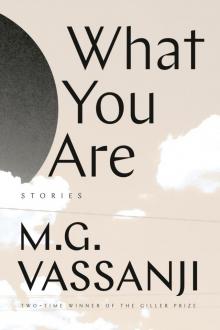 What You Are
What You Are A Delhi Obsession
A Delhi Obsession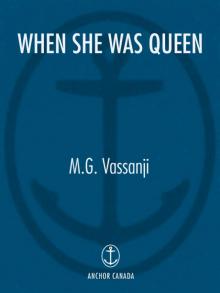 When She Was Queen
When She Was Queen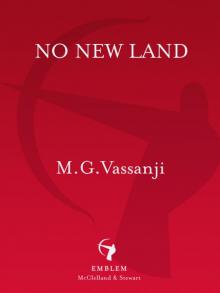 No New Land
No New Land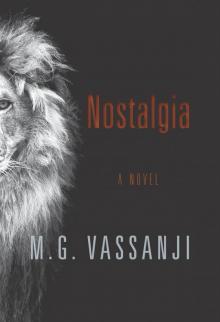 Nostalgia
Nostalgia Mordecai Richler
Mordecai Richler The Book of Secrets
The Book of Secrets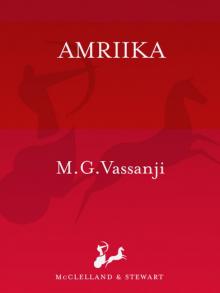 Amriika
Amriika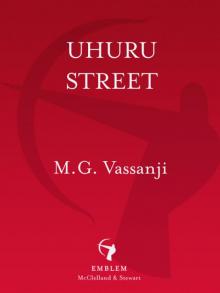 Uhuru Street
Uhuru Street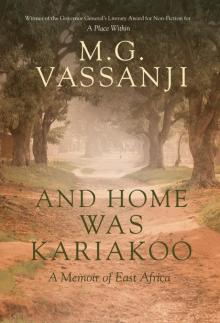 And Home Was Kariakoo
And Home Was Kariakoo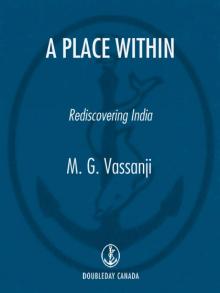 A Place Within
A Place Within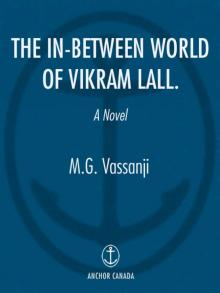 The In-Between World of Vikram Lall
The In-Between World of Vikram Lall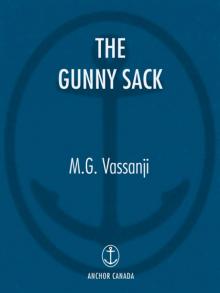 The Gunny Sack
The Gunny Sack